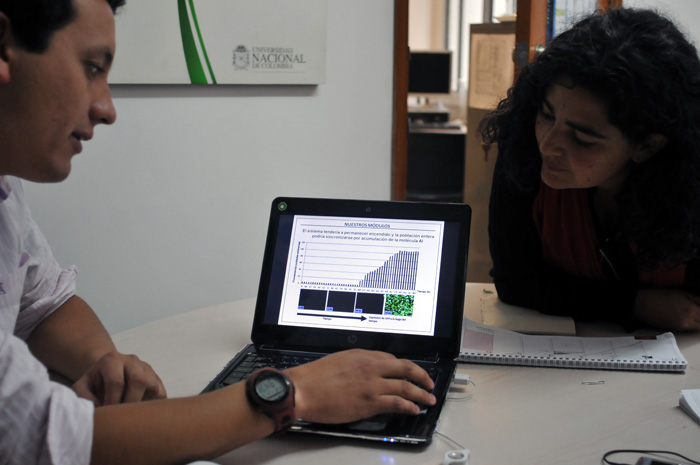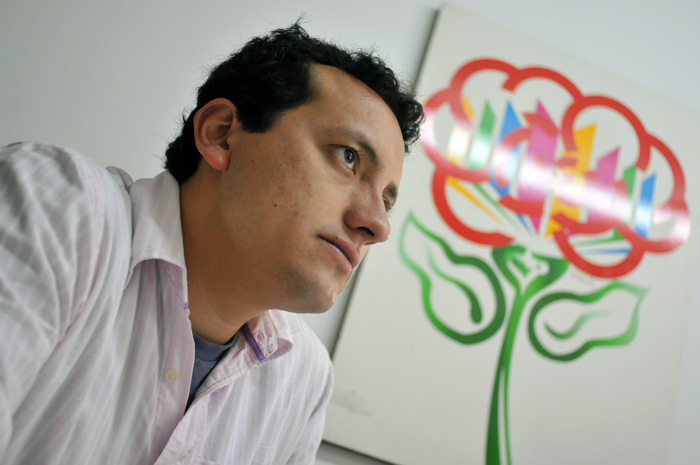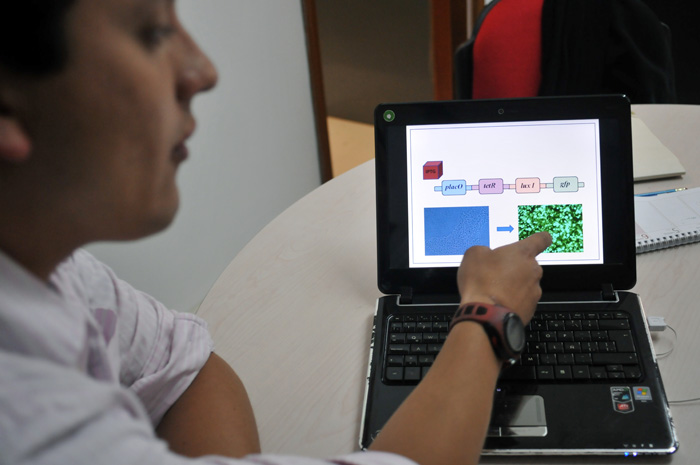This module has just been design by Miguel Angel Fernandez Niño, a student of the Master in Sciences-Biochemistry, and its characteristics are included in his thesis Construction of a synthetic module of bacterial communication. This work was directed by Phd in biology Catalina Arevalo Ferro, professor of the Department of biology of Universidad Nacional de Colombia.
"This synthetic module was already built, it can be used with one or several cells and it can be combined with other modules of synthetic biology. The objective has been achieved. Once this investigation is published, it will be send to a module base to be used by the entire world," asserted Arevalo.
This module will be used in the pharmaceutical fields, since bacterial communication or Quorum sensing is a phenomenon that regulates, among other manifestations, several factors of virulence among bacteria. The reason is that when bacteria are in quorum, they are aggressive and express virulence, for instance, the flu.
For avoiding the quorum and prevent bacteria to express virulence, this module will be a tool that will contribute to the design of antipathogenic molecules, that will help preventing the resistance to antibiotics.
This synthetic module can be also applied to basic sciences to help understanding the way in which bacterial communication works, explained the Professor. Likewise, it will be useful in the field of biology to observe communication networks and tissue formation.
"We are already using this module to figure out if the bacteria we study daily have communication mechanisms, and we are using it as a biosensor to detect if cells contain unknown molecules. Additionally, since the module can be standardized in time, different compound extracted from organism can be evaluated as inhibitors of the communication system, in order to identify the affected gen in the network" asserted the professor.
The idea is isolating genes from different organisms that are part of the native communication systems of bacteria, and put them in the module that permits bacterial communication based on chemical stimuli, explain Fernandez. He also explained that the purpose of his investigation was to develop a synthetic biology tool to model, design, built and assemble an artificial mechanism of communication between cells.
This proceeding in general consisted in cutting the genes needed with restriction enzymes and put them together one after the other, taking into account their expression, in order to create a chain, explain Fernandez. The network has components of the communication system of different bacteria, with makes it more versatile.
Synthetic biology allows, in this case, designing theoretically a controlled study system and model the expression of gen, which cannot be done with conventional systems.
This module counts on a plug and play interconnection system, which allows connecting it with other artificial modules, designed by other researchers with other functions.
The idea now is connect it with other systems that permit cooperation among cells in order to know how the communication occurs, how they aggregate and how they cooperate, depending on their function, or if they cannot communicate.
 Correo Electrónico
Correo Electrónico
 DNINFOA - SIA
DNINFOA - SIA
 Bibliotecas
Bibliotecas
 Convocatorias
Convocatorias
 Identidad UNAL
Identidad UNAL





